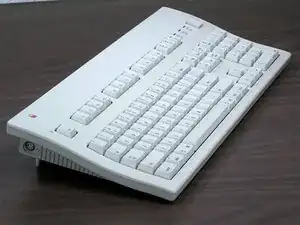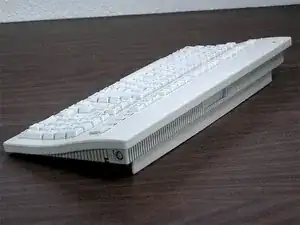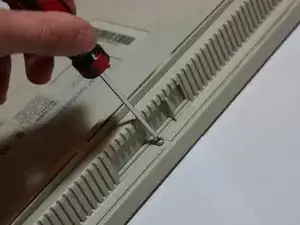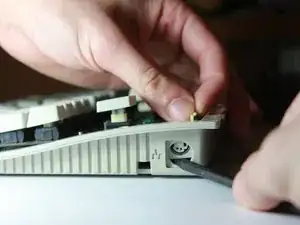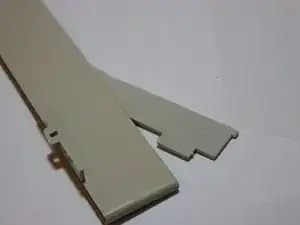Introduction
Hey, /u/afischer15 is still working on this. Also these photos ALL need serious touching up.
Tools
-
-
Ahh, the Apple Extended Keyboard II. Some argue it's the best keyboard ever made. I'm just here to tear it down. Some specs:
-
Model No. M0312 and M3501
-
Manufactured by Alps Electric or Mitsumi in Japan, Ireland, Mexico, or The United States
-
Plate-mount Alps cream dampened, Alps White, Alps Salmon, or Mitsumi White switches
-
Two Apple Desktop Bus (ADB) Ports
-
108-key (ANSI) and 109-key (ISO) layouts
-
PBT Keycaps (well, except for the spacebar)
-
-
-
Here's the keyboard we will be working on today. She's not beautiful, but she's mine.
-
My AEKII is a US made with Alps switches.
-
While the keys are PBT plastic, the case and spacebar are ABS. ABS plastics yellow over time.
-
-
-
The keyboard is held in by just one philips head screw on the back! Flip over your keyboard and unscrew that bad boy.
-
Once unscrewed, flip over the keyboard and release the clips from the top. A plastic opening tool may be helpful, but they are fairly loose.
-
-
-
The two ADB connectors need to be removed from their brackets.
-
Use a fingernail or a spudger to push the surface mount port upwards.
-
When it's possible, grab the top of the green PCB and lift the board out of it's small mount.
-
Repeat this for both ports.
-
-
-
Two plastic tabs hold the keyboard's PCB and switches in place.
-
Use your thumbs to carefully press the tabs backwards. Reach under with your forefingers to release the board from the clips.
-
Lift the entire PCB assembly up and away from the keyboard case.
-
Be sure to lift up and out, as there are five small sets of clips gripping the bottom.
-
-
-
Now we can take a closer look at the PCB!
-
The brains of this keyboard is a Toshiba TC4515BP binary controller.
-
A Fairchild CD4515BCN Decoder
-
A GD54/74LS04 Hex Inverter
-
3 green indicator LEDs
-
-
-
Remove the spring bar from the foot.
-
Release three sets of clips from the foot by pressing outward while lifting up. The back will need to be bowed out in order to remove the larger bump used as a control switch in the center.
-
Lift the foot up and away from the case. It should easily separate into two parts.
-
-
-
Remove the protective foil by releasing seven small tabs.
-
This is easiest to do if you start from one side, apply downward pressure, and continue to each subsequent set of clips.
-
-
-
All done!
-
To reassemble the keyboard, follow this guide in reverse order.
-
Bye bye, tab. Good thing there were two of you.
-
One comment
Super helpful guide! I recently restored an old AEK2 that had a bad “C” key. With this guide, I was able to easily take it apart and found out that the key was oxidized and bad. Now that my keyboard has a new keyswitch, I can use it with my modern Macs.

